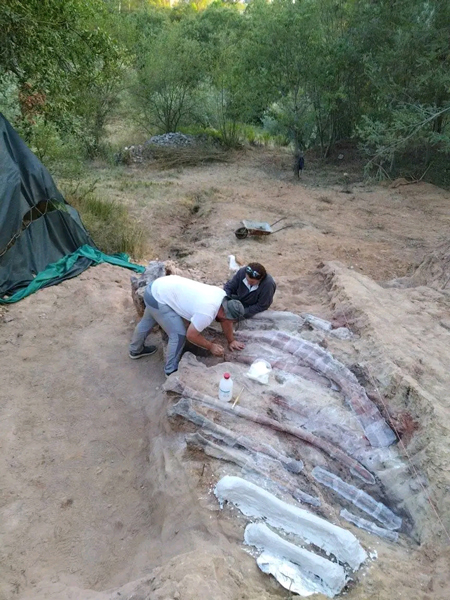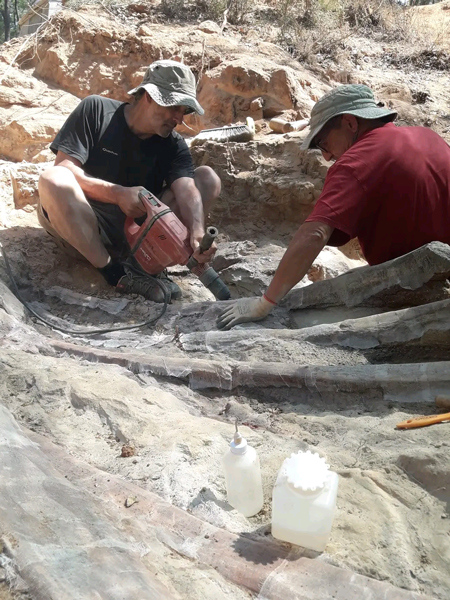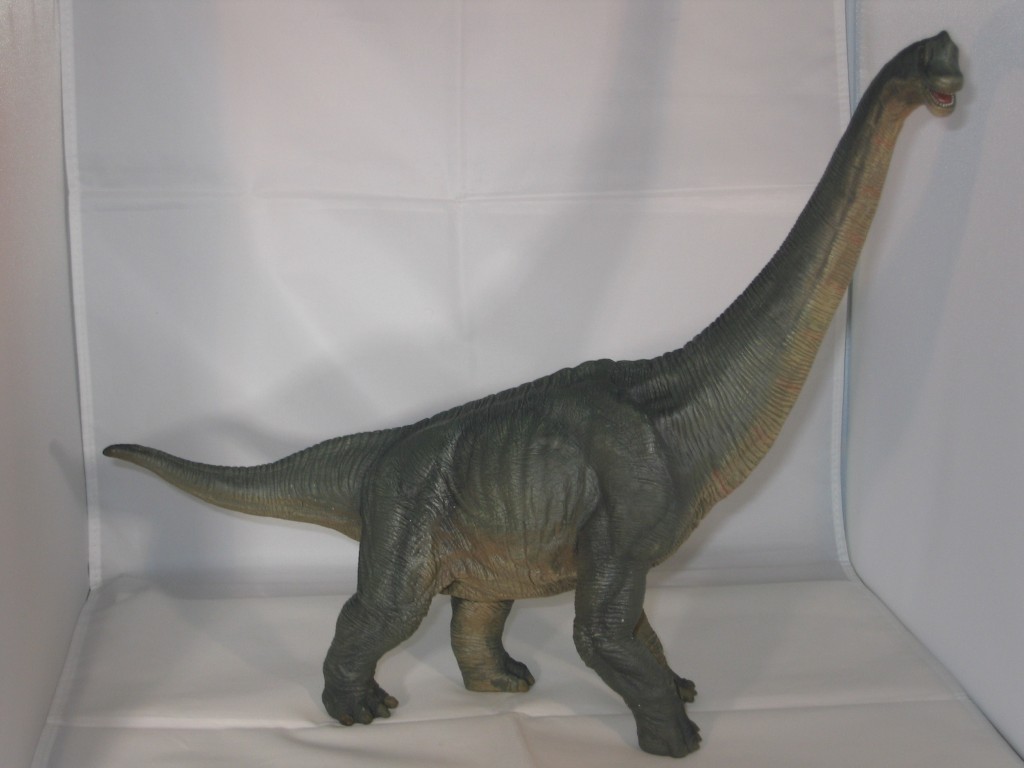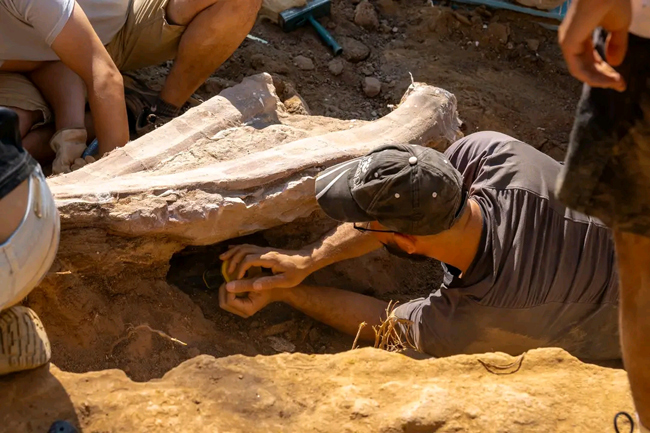Giant Sauropod in the Garden
Back in June (2022), Everything Dinosaur team members wrote about the “White Rock spinosaurid” *, what could turn out to be the biggest predatory dinosaur found to date in Europe. At the time, many media outlets mistakenly reported that these fossils, found on the Isle of Wight, represented “Europe’s biggest dinosaur”. Not true, the remains of what could be the largest dinosaur ever discovered in Europe are being excavated in a Portuguese back garden.

Giant Sauropod
The first fossils were uncovered in 2017 when the property owner in the city of Pombal, in the Leiria District, central Portugal, began construction work in the garden. The strata in this area of Portugal were laid down approximately 150 million years ago (Upper Jurassic) and the fossils are from a sauropod, a long-necked, long-tailed herbivore that could have measured more than 25 metres long.

A joint Spanish/Portuguese field team have been working to expose, stabilise and remove the fossilised bones. In the picture above, two ribs have been coated in plaster and burlap in preparation for their removal from the site.
A European Brachiosaurid
Tentatively described as a member of the Brachiosauridae family, parts of the backbone and ribs have been excavated so far. The bones were found in virtually their original articulated and anatomical position.
Elisabete Malafaia, post-doctoral researcher at the Faculty of Sciences of the University of Lisbon and member of the field team excavating the giant bones stated that it was extremely unusual to find all the ribs of a sauropod, almost entirely intact. The skeleton was found in the position that the dinosaur probably died in, no post-mortem transport of the corpse took place.

The field team are optimistic that more bones remain buried, including the skull. To find an almost complete skeleton of this type of dinosaur would be a truly remarkable discovery with the potential to provide scientists with an enormous amount of data on Late Jurassic sauropods.
A Member of the Macronaria
The Neosauropoda clade, a sub-group within the Sauropoda is divided into two sub-clades. The Diplodocoidea and the Macronaria. The Macronaria are distinguished by having a large nasal (external naris), the diameter of the nasal opening exceeding the diameter of the eye socket (orbit). Brachiosaurids and the titanosaurs, which thrived during the Cretaceous, represent some of the biggest land animals to have ever existed.

It has been speculated that the head height of the Portuguese sauropod could be as much as 12 metres, that would make this dinosaur tall enough to look over a three-storey house!

Years of Laboratory Work Ahead
Dinosaur fans will have to be patient and wait for a formal scientific description. It is likely to take several years to fully prepare and study the huge, fossilised bones, of what is probably a new dinosaur species. A spokesperson from Everything Dinosaur commented that this was an amazing fossil find and that this Portuguese discovery could rival some of the sauropod fossils found in the roughly contemporaneous Morrison Formation of the western United States.

Everything Dinosaur contacted the Faculty of Sciences of the University of Lisbon media team to request images for this blog post, we acknowledge their assistance in the compilation of this article. The University’s press team kindly responded, supplied images and wrote:
“Obrigada pelo interesse neste trabalho. Partilho aqui algumas imagens com boa resolução.”
This translates as “thank you for your interest in this work, here are some high-resolution images for you.”
We look forward to hearing more about this remarkable discovery and the eventual naming and scientific description of a huge sauropod from a Portuguese garden.
“White Rock spinosaurid” * – to read Everything Dinosaur’s article from June, 2022 on the discovery of potentially Europe’s largest carnivorous dinosaur known to date: Super-sized Carnivorous Dinosaur from the Isle of Wight.

